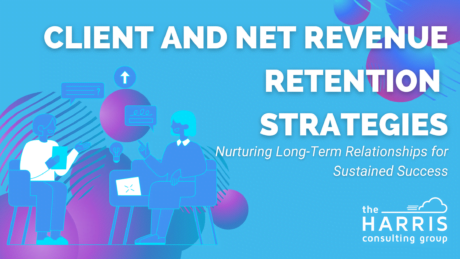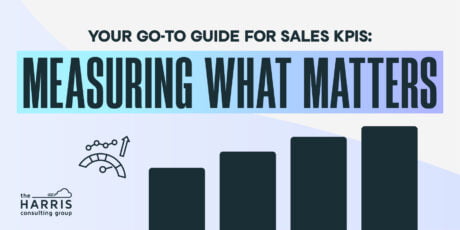One of the biggest challenges happening right now is setting budgets, especially knowing how to set a sales training budget appropriately. This post was inspired by a thread via Modern Sales Pros. If you haven’t joined, I’d encourage you to do so.
The original questions posted were:
- Is the training budget % of the total salaries of SDR/AE? Would love to hear how you have structured it internally. (e.g. $X/year/SDR)
- How is the budget divided between software products vs coaching agencies/third-party training?
- How do you define the ROI of these activities? (Given they have a 2nd-degree effect on revenue)
This was my response:
- When we implement sales training for the XXX team, we expect them to be better at ____, ____, and ____.
- When you fill in those blanks with buzzwords like “prospecting”, you have to define that…
- Prospecting means generating a pipeline by being better at cold calls, email prospecting, etc.
- When you say cold calls you define that as “Live Pick Ups, VMs, Gatekeeper, etc.”
- When we say emails we mean, “Subject Lines, Awareness Statements, CTAs, Cadence/Sequence, etc.”
- We will define improvements as an increase or decrease in ___, ____, and ____.
- Sometimes less equals more.
- You could have more meetings set with the right persona, yet fewer meetings.
- You may have fewer meetings, but a higher show-up rate.
- You could have less pipeline generated, but it’s better qualified.
- True/False – We have the current metrics to contrast from answers to 1 and 2.
- If True, then good.
- If False, then you have to say, “We will give ourselves 2 full sales cycles to establish true baselines.”
- If someone tells you that have you have 2 weeks or 2 months, first spit your coffee out at them, then use #BlameRichard.
Question #1
Is the sales training budget % of the total salaries of SDR/AE? Would love to hear how you have structured it internally. (e.g. $X/year/SDR)
-
- Recommend defining budget vs. stipend.
- Budget for team training.
- A stipend is a set amount given to each rep to learn on their own, recommend $1,000/year per rep, and it’s a use-it-or-lose-it approach.
- Determining a budget without researching costs will hurt you in the long run.
- No quality sales trainer will “discount” because of your budget.
- Whenever someone asks me for a discount, I explain, “Appreciate the ask, but our pricing is based on what the market will bear. How does our price compare to other trainers?”
- I recommend you ask the trainer for additional coaching sessions for the price they offer. That is worth 10x the discount you are seeking.
- Recommend defining budget vs. stipend.
Question #2
How is the budget divided between software products vs coaching agencies/third-party training?
-
- Do you mean software, like online training?
- It depends on how your individual team members like to learn.
- Some can learn from a portal and connect the dots to your sales world. Others are not. It’s not a question of intelligence, it’s a question of the best way to retain information.
- The advantage of an online solution is self-paced.
- The disadvantage of an online solution is that it is not customized.
- The disadvantage of an online solution is that you have to give them time during the work day, or you have to pay them overtime if they do it outside work hours. SDRs are non-exempt. And no, “it’s for their benefit” is not a legal argument that holds any weight.
- The advantage of in-person training is customization.
- The advantage of in-person training is that it should include reinforcement after the initial training.
Question #3
How do you define the ROI of these activities? (Given they have a 2nd-degree effect on revenue)
-
- Pfffttt. ROI – worst phrase ever. It’s just a power phrase execs and CFOs like to use to scare you and give them a false-belief system that they are being rational.
- Whatever words and numbers are given after someone asks about ROI is never believed. NEVER!!
- It’s about proving the Economic Impact.
- AE’s should attend this training AND be expected to generate 15% of their own business.
- Show the current pipeline generated. Show expected pipeline growth after training.
- Showing the close ratio of the net new pipeline.
- Showing the revenue in LTV (Lifetime Value) of the new business.
- Specifically, do not allow anyone to force this number into ACV (Average Contract Value)
- Showing the net new LTV and what it does to the valuation of your company for the next round of funding.
- Now, you have an Economic Impact, which is better than ROI.
- Finally, the real Economic Impact will be based on the ability of the sales team to close the new pipeline, not the SDR team. And this MUST be articulated when fighting for your budget. Because the sales team will blame the SDRs, they always do.
- Pfffttt. ROI – worst phrase ever. It’s just a power phrase execs and CFOs like to use to scare you and give them a false-belief system that they are being rational.
If you are having trouble setting budgets for sales training or want to see how sales training might benefit you or your team, schedule a time to chat here.






